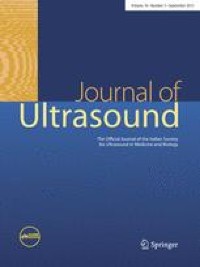|
Anapafseos 5 Agios Nikolaos 72100,Crete,Greece,00302841026182,00306932607174,alsfakia@gmail.com
Blog Archive
- ► 2022 (3010)
-
▼
2021
(9899)
-
▼
January
(1067)
-
▼
Jan 07
(100)
- Fracture of the scapular neck combined with rotato...
- Synchronous colonic mucosa-associated lymphoid tis...
- Novel mutation in the ASXL3 gene in a Chinese boy ...
- Recurrent thrombosis in the lower extremities afte...
- Status epilepticus as an initial manifestation of ...
- Delayed diagnosis of prosopagnosia following a hem...
- Oral myiasis after cerebral infarction in an elder...
- Rare case of drain-site hernia after laparoscopic ...
- Extracorporeal shock wave therapy treatment of pai...
- Takotsubo cardiomyopathy associated with bronchosc...
- Idiopathic adulthood ductopenia with elevated tran...
- Successful endovascular treatment with long-term a...
- Primary duodenal tuberculosis misdiagnosed as tumo...
- Association among daily fish intake, white blood c...
- Expansion of circulating peripheral TIGIT+CD226+ C...
- Proliferative Verrucous Leukoplakia
- The Stapes in Otosclerosis: Osteoarthritis of an E...
- Factors that influence biological survival in rheu...
- Magnetic resonance diffusion kurtosis imaging in d...
- Dual-energy CT quantitative parameters for evaluat...
- Iodine-related attenuation in contrast-enhanced du...
- Assessment of naive indolent lymphoma using whole-...
- Evaluation of the potential of Pap test fluid and ...
- Cinnamaldehyde Facilitates Cadmium Tolerance by Mo...
- Clinical Efficacy of a New Robot-assisted Gait Tra...
- Comparing the effects of supplemental oxygen thera...
- 14-3-3 mitigates alpha-synuclein aggregation and t...
- Loss of cholinergic innervation differentially aff...
- Hard tissue volumetric and soft tissue contour lin...
- Severe periodontitis has been associated with endo...
- Association between periodontitis and pulse wave v...
- Neurodoping in Chess to Enhance Mental Stamina
- From Transcript to Tissue: Multiscale Modeling fro...
- Nerve ultrasonography features in hereditary trans...
- Modeling and Reducing the Effect of Geometric Unce...
- Blocking the Spinal Fbxo3/CARM1/K + Channel Epigen...
- Bacterial association observations in Lucilia seri...
- Impact of mandibular advancement device therapy on...
- Does nocturnal use of a complete denture interfere...
- Recent advances in understanding the roles of sial...
- Neuroprotective effect of heparin Trisulfated disa...
- The Process of Selecting a Method for Identifying ...
- Acute effects of dynamic stretching on neuromechan...
- Asymptomatic type 2 diabetes mellitus display a re...
- Insights into the combination of neuromuscular ele...
- Doppler-guided hemorrhoidal dearterialization with...
- Serum level of fetuin-A in systemic lupus erythema...
- Factors that influence biological survival in rheu...
- Does sublingual microscopy correlate with nailfold...
- Clinical study of anatomical ACL reconstruction us...
- Use of quantitative angiographic methods with a da...
- Reduced gray-white matter contrast localizes the m...
- Concurrent chemoradiation in locally advanced prim...
- Open synovectomy treatment for intra- and extraart...
- Patient-reported outcomes in young adults with ost...
- The association between keloid and osteoporosis: r...
- Outcomes of diverticulitis
- Poorer prognosis for neuroendocrine carcinoma than...
- Numerical joint invariant level set formulation wi...
- Deblur and deep depth from single defocus image
- MiR-501-3p promotes osteosarcoma cell proliferatio...
- Anesthetic management of unruptured intracranial a...
- Serious adverse events with novel beta-lactam/beta...
- Orthognathic surgery in class II patients: a longi...
- Efficacy of platelet-rich fibrin compared with tri...
- Modulation of TNFR 1-triggered two opposing signal...
- An overview of opioid usage and regional anesthesi...
- A novel partition selection method for modular fac...
- Fast approach for moving vehicle localization and ...
- Ultrasound evaluation of ductal carcinoma in situ ...
- Comparison of testicular vascularity via superb mi...
- Ultrasound evaluation of the first finger’s sesamo...
- Contrast-enhanced ultrasound features of breast ca...
- Air bronchogram integrated lung ultrasound score t...
- Smoothed particle hydrodynamics simulation of biph...
- Closure of Gastrointestinal Fistulas and Leaks wit...
- Trans-pulmonary closure of an aorto-pulmonary wind...
- Increasing role of cardiac surgeons in managing ca...
- Modulation of TNFR 1-triggered two opposing signal...
- Relationship between clinicopathologic factors and...
- SH2 domain-containing protein tyrosine phosphatase...
- Effective clearance of uremic toxins using functio...
- Therapeutic approach for global myocardial injury ...
- The clinical efficacy and safety of single-agent p...
- Mesenteric Venous Thrombosis Due to Coronavirus
- Lymphatic filariasis
- Regulation of human THP-1 macrophage polarization ...
- PCR-based diagnosis is not always useful in the ac...
- Characterization and localization of antigens for ...
- Periorbital human dirofilariasis
- How I do it: Management of venous bleeding from th...
- Familial tendency in patients with lipoma of the f...
- Wip1 Aggravates the Cerulein-Induced Cell Autophag...
- Decreased expression of TRIM3 gene predicts a poor...
- Safety and tolerability of regorafenib:
- Gastric Cancer Incidence and Mortality in French G...
- Endoscopic Ultrasonography is a Promising Tool for...
- Endoscopic Ultrasound-Guided Ethanol Injection Ass...
- TERRA Gene Expression in Gastric Cancer: Role of h...
- Immunohistochemical Expression Pattern of MLH1, MS...
-
▼
Jan 07
(100)
-
▼
January
(1067)
- ► 2020 (4138)
- ► 2019 (2429)
Αλέξανδρος Γ. Σφακιανάκης
Thursday, January 7, 2021
Ultrasound evaluation of ductal carcinoma in situ of the breast
Subscribe to:
Post Comments (Atom)



No comments:
Post a Comment